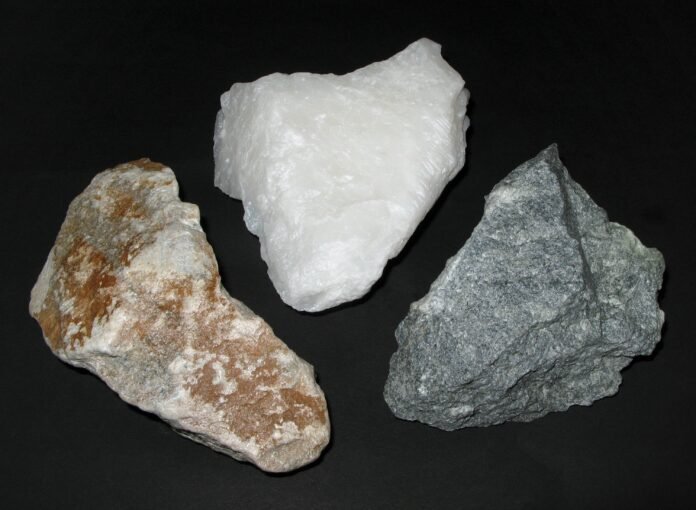Soapstone, also known as steatite, is a metamorphic rock rich in talc, making it soft yet durable. Its applications range across several industries, from cosmetics to ceramics and even paper production. However, to transform raw soapstone into a usable product for industrial purposes, several critical steps must be followed. This article delves into the detailed process of soapstone processing, shedding light on how it serves as a key material in various industries and its preparation for high-quality usage.
Mining of Soapstone
The first step in soapstone processing begins with the extraction of the raw material. Soapstone is typically found in metamorphic rocks formed from the alteration of ultramafic and dolomitic limestones. This process happens in mines, where the soapstone is manually or mechanically excavated. The mining of soapstone can take place either on the surface or underground, depending on the geology of the region.
During mining, large soapstone blocks are extracted from the earth, ensuring minimal contamination from surrounding rocks and minerals. Once extracted, these blocks are transported to processing facilities for further refinement. This careful extraction ensures that the soapstone is of high quality, suitable for various industrial uses.
Crushing and Sorting
Once the soapstone has been mined, the next step is to crush the large blocks into smaller pieces. This is done using crushers and hammer mills designed to reduce the stone’s size while preserving its structural properties. The crushing process is crucial as it helps prepare the soapstone for subsequent stages, such as grinding and sieving.
After crushing, the material is sorted based on size and quality. Sorting helps separate soapstone with high talc content from other impurities or lesser-quality material. High-quality soapstone is necessary for industries like pharmaceuticals and cosmetics, where purity is essential.
Grinding and Pulverization
The soapstone is then ground into a fine powder, a key step in transforming the raw material into a usable industrial product. Specialized milling machines and ball mills are used for this purpose. The goal is to achieve a fine, consistent texture that allows the soapstone to be utilized in applications requiring a soft, pliable material.
Grinding and pulverization reduce the soapstone to a fine powder, which is then further refined through air classification and sieving to remove any remaining impurities. The fine powder is critical for industries such as ceramics, where it is used to manufacture tiles, and in the paper industry, where soapstone acts as a filler to provide smoothness and consistency to paper products.
Flotation and Beneficiation
Beneficiation is a process designed to enhance the purity of the soapstone. This is often done through a flotation process, where soapstone particles are separated from impurities like iron or other minerals. In flotation, the soapstone powder is mixed with water and chemicals that cause the talc to float to the surface while the impurities sink.
This step is particularly crucial for industries requiring high-purity talc, such as cosmetics and pharmaceuticals. The flotation process ensures that the final product meets the stringent standards necessary for these industries.
Drying and Filtering
After flotation, the soapstone powder still contains moisture. The next step is to dry the material, ensuring it has the correct moisture content for its intended use. This drying process can be done using rotary dryers or fluid bed dryers. It is essential to control the drying temperature to prevent degradation of the talc particles.
After drying, the soapstone powder may undergo further filtration and air classification to ensure that only the finest particles remain. This step is especially important for products such as baby powder or other finely milled talc products, where a smooth, fine texture is critical.
Packaging and Distribution
Once the soapstone has been processed into a fine, pure powder, it is ready for packaging. Packaging plays an important role in maintaining the quality and purity of the product during transportation and storage. Soapstone powder is typically packed in bags or bulk containers, depending on the quantity required by the customer.
At this stage, soapstone manufacturers ensure that the product meets all the necessary industrial standards. The processed soapstone is then shipped to various industries across the globe for use in products ranging from ceramics to personal care items.
Industrial Applications of Processed Soapstone
The processed soapstone is incredibly versatile, with applications spanning multiple industries:
- Cosmetics and personal care products: Talc is a common ingredient in products like baby powder and makeup, as it is gentle on the skin.
- Ceramics: Soapstone is used to manufacture ceramic tiles, sinks, and other durable, heat-resistant products.
- Paints and coatings: The fine texture of soapstone powder helps create smooth, high-quality paints.
- Paper production: Soapstone acts as a filler in paper, making the finished product smoother and more durable.
- Plastics: Talc-filled plastics are lighter and more durable, making soapstone an important component in the plastics industry.
Conclusion
The process of turning raw soapstone into a valuable industrial material involves a series of carefully monitored steps, from mining and crushing to grinding, flotation, and packaging. This transformation ensures that the final product meets the rigorous demands of various industries, including cosmetics, ceramics, and paper manufacturing.
As a premier Soapstone manufacturer in India, Anand Talc follows these intricate steps with precision to ensure that their customers receive only the highest-quality material. With a reputation as a reliable Talc Powder exporter in India, the company is committed to delivering excellence through experience, expertise, and trustworthiness.
By understanding the soapstone processing steps, businesses can make informed decisions when choosing suppliers for their industrial needs. Soapstone remains an invaluable resource, serving diverse applications thanks to its unique properties and the meticulous processes involved in its preparation.



